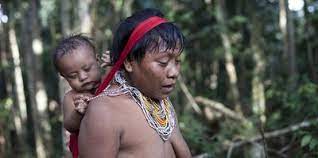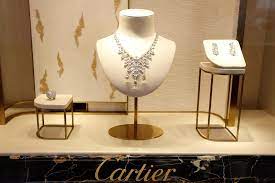


Until two months ago, Cartier’s website showed Yanomami children playing in a green field. The French luxury jewelry brand said it was working to promote the culture of the Indigenous people and protect the rainforest where they live, in a vast territory straddling Brazil and Venezuela.But the project that the site described protecting the Amazon never took place. And Cartier published the photo without the approval of Yanomami leadership, violating the beliefs of a people who had been living in almost total isolation until they were contacted by outsiders in the 1970s.
Some of the Yanomami and their defenders praise Cartier’s promotion of Yanomami causes. However, advertising by one of the world’s biggest jewelers with images of an Indigenous people devastated by illegal gold mining has some complaining of greenwashing, a corporation promoting its own image by supporting a cause.
“How can a gold jewelry company, which we, the Yanomami people, are against, use the image of the Yanomami?” asked Júnior Hekurari, a member of the Indigenous group and head of the Yanomami’s health council.
Disease, killing and prostitution, fuelled by the drugs and alcohol imported by thousands of illegal gold miners, have devastated traditional Yanomami life, and 570 Yanomami children died from malnutrition, diarrhea, and malaria between 2019 and 2022, according to Brazilian statistics. The poisonous mercury used in illegal mining causes birth defects and ravages ecosystems.Cartier says it does not buy illegally mined gold, but Yanomami leaders have urged people not to buy gold jewelry at all, regardless of its source, because demand for the precious metal drives gold prices up and draws miners into their territory.
Cartier and other jewelry brands that are part of the Swiss conglomerate Richemont had combined sales of 11 billion euros (USD 11.7 billion) in the fiscal year ending March 31, 2022, according to its annual report. Some of the pieces advertised on its US website cost as much as USD 341,000.
Cartier’s connection to the roughly 40,000 Yanomami goes back 20 years, primarily through Fondation Cartier, a corporate philanthropy created and funded by the company in 1984.In the past, few Yanomami or their advocates have publicly criticised Cartier or the foundation, but a growing number have begun expressing concerns.
Cartier’s foundation recently sponsored a finely curated exhibit displaying photographs of Yanomami, along with works by Indigenous artists, in an elegant non-profit Manhattan arts center. The exhibit, previously in Paris, was praised by outlets ranging from The New York Times to Luxury Daily, an influential industry publication whose headline read, “ Fondation Cartier continues push for indigenous justice through art sponsorship.”
Barbara Navarro, a French multimedia artist, saw something very different, as did several other artists, including some Yanomami.
In the multimedia show “Pas de Cartier, ” or “Not Cartier,” in the village of Nemours, France, Navarro and others critique the luxury brand and the devastation caused by illegal miners in an exhibit that includes sculptures and drawings. In one photo montage, a large gold mine surrounded by the Amazon forest is seen next to a Cartier store.